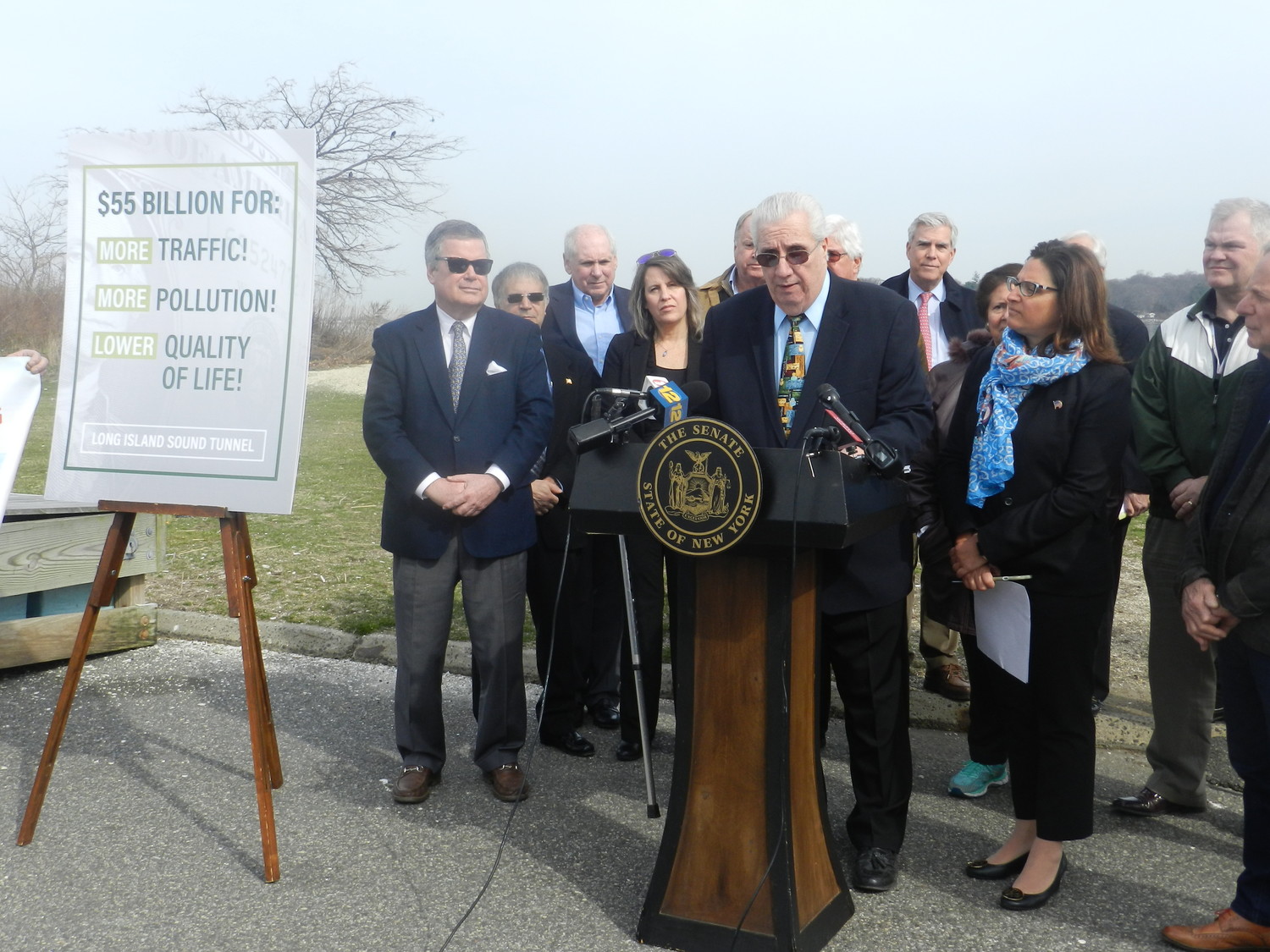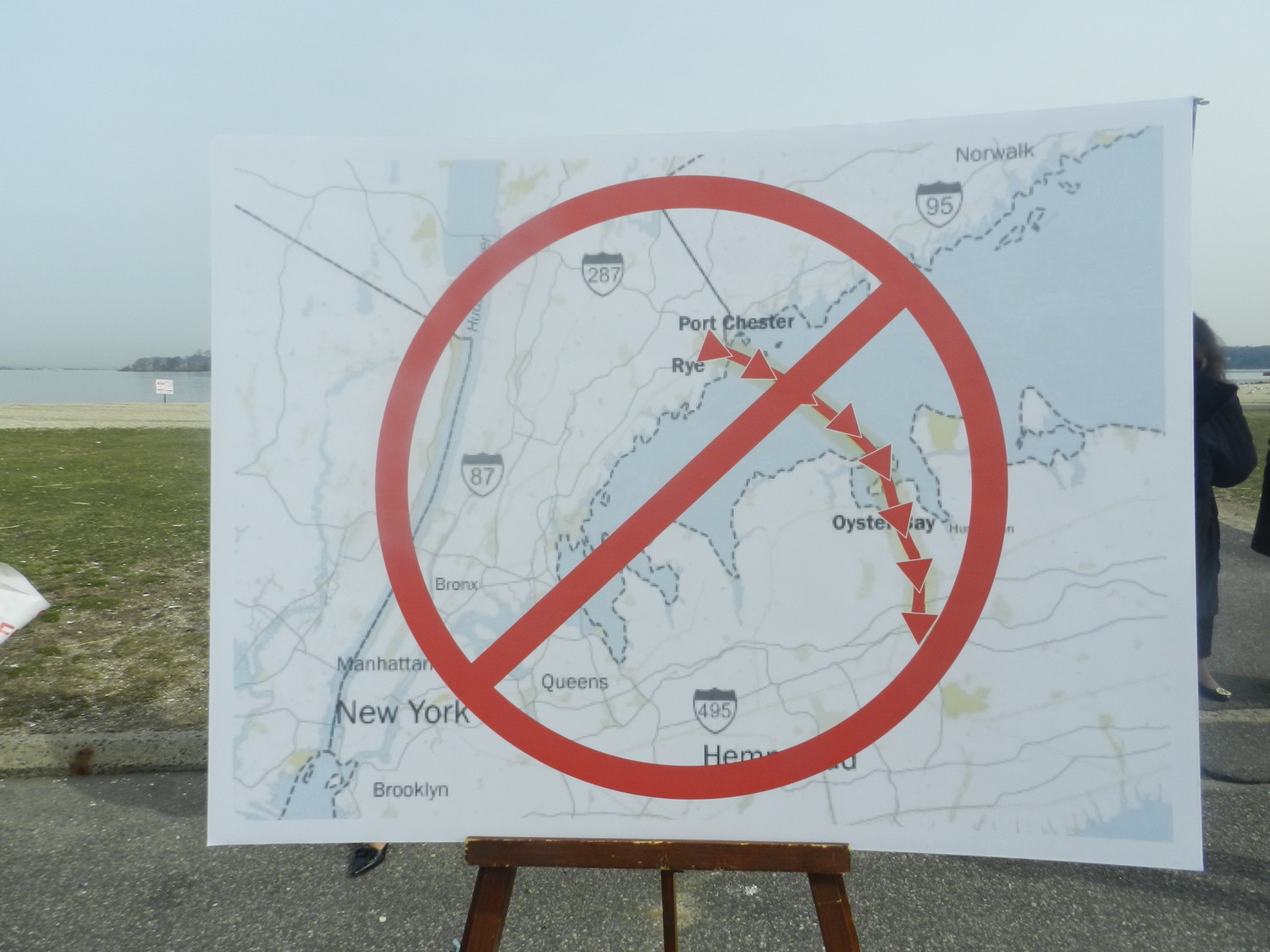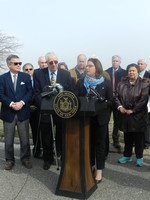Senator: Cuomo’s cross-sound proposal is ‘ill-conceived’
State Senator Carl Marcellino joined local mayors, environmental groups, and community activists at a press conference on March 1 to oppose Gov. Cuomo’s proposal for a cross-sound bridge/tunnel. The conference was held at Theodore Roosevelt Memorial Park in Oyster Bay, the very same location that would be threatened by such a project.
Marcellino presented the minutes from a public hearing that took place in January 2008 between New York State’s Senate Committee on Environmental Conversation and Assembly Committee on Transportation, which addressed the issues associated with constructing a similar cross sound tunnel. Ten years later, the opposition is still strong.
“This proposal has a huge potential for destroying our communities, our harbor, our homes and changing our way of life,” Marcellino said. “There’s unanimous opposition to this, but for one person.”
The $55 billion project would extend Route 135 a half-mile north through residential and commercial areas into a tunnel portal that continues another nine miles beyond Long Island’s shoreline. The structure would then either remain as a tunnel to Westchester, or transition to a six-mile bridge and one-mile tunnel that would intersect with I-95.
Marcellino said that the goal now is to build greater opposition within the public. “We want to let the governor know that there’s no community support for this,” he said.
North Shore residents on the other side of the sound voiced their concerns about the proposal.
Sea Cliff Mayor Edward Lieberman said the concept of a Sound crossing has been on the table when he was growing up, during the time of Nelson Rockefeller and Robert Moses.
“There are many related issues that have to be explored such as the environmental impact, traffic congestion, and the high cost of construction,” Lieberman said.
In 1968, when Robert Moses was intending to build the Rye-Oyster Bay Bridge, the town donated the Oyster Bay National Wildlife Refuge, a 3,100‐acre preserve, to the federal government in order to protect the shoreline.
“This effectively stopped Moses and the state in their tracks, which is why Route 135 ends so abruptly,” said Nancy Hawkins, of Glen Cove. “I fail to see that Cuomo can undo that action. Perhaps he is counting on shortened memories.”
“The federal government turned down funding for the Hudson River rail tunnel that was a fraction of the cost of this,” said Glen Head resident Robert Schaffrath. “The state does not have the money to do this alone and it appears the fed will not be sending any money here either.”
Eric Swenson, the executive director of the Hempstead Harbor Protection Committee, said the $55 billion would be better spent connecting Long Island homes to sewage treatment plants.
Some residents support the proposal. “I’m all for it,” said Stephenie Bross, of Sea Cliff. “We need more options for getting off Long Island.”
“I want to be able to leave this sand bar with dignity and grace,” said Donna Kianka, of Sea Cliff. “I’m tired of sitting in traffic, and we need another way to escape.”
Other residents on the North Shore Neighbors Facebook page were all for the Sound crossing, commenting “build it” and “bring it on.”
Officials at the conference were vocal about the negative implications a Sound-crossing would bring to the area.
“It’s not a good idea economically as far as the urbanization, and it’ll turn most of Long Island into an extension of Queens,” said Bayville Trustee John Taylor
Bayville Deputy Mayor Joe Russo recommended the state use the $55 billion to repair existing infrastructure. “It’s a colossal waste of money,” he said. “They’re not taking into account what travel is going to look like in 20 years when this is actually done. We could be building something that may have very limited use.” Russo added that the project alone could almost double state debt.
Rob Crafa, coordinator for the Oyster Bay-Cold Spring Harbor Protection Committee, said the environmental implications would be “incredibly destructive” to the area. “This bay supports the state’s fishing industry,” he said. “Planning a sound crossing over or under this embayment is contrary to numerous government designations to protect the ecologic and economic benefits of the sound.”











